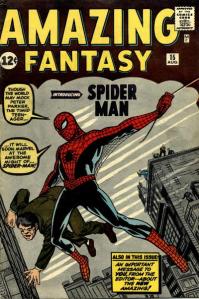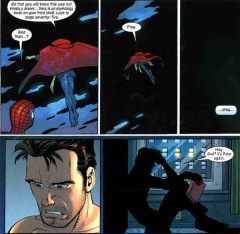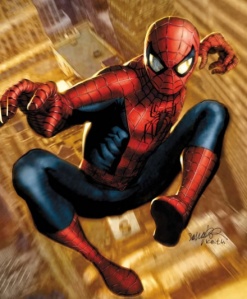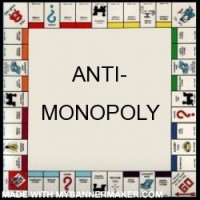I may be a cult of one, but I love Banjo-Tooie. Perhaps this isn’t surprising, because the Nintendo 64 was by far my favorite system ever made, but even among N64 enthusiasts, Banjo-Tooie is one that often slips under people’s radars. I love asking people what their “Top 5” list of video games is. You hear many different answers depending on who you’re asking, and it can often lead to some great conversation.
My Top 5 favorite video games are:
1) The Legend of Zelda: Ocarina of Time (N64)
2) Super Mario Bros. 3 (NES)
3) Mario Kart 64 (N64)
4) Super Smash Bros. (N64)
5) Banjo-Tooie (N64)
***Yes, 4 out of 5 of those are N64 titles. Sorry I’m not sorry about it.***
I think most any gamer would have at least one or two of those in his or her Top 5 (I’m looking at you, Ocarina). When I tell people my Top 5, they often say, “Banjo-Tooie? What about Metroid? Mega Man? Castlevania? Mass Effect? Street Fighter 2?”
Yes, I know.
 All those are great games in their own right. Taking with a grain of salt that this list is completely objective and opinionated (but if you disagree that Ocarina is the greatest game ever made, you’re just wrong), what is so great about Banjo-Tooie that would make me rank it above all those classics? Where do I begin?
All those are great games in their own right. Taking with a grain of salt that this list is completely objective and opinionated (but if you disagree that Ocarina is the greatest game ever made, you’re just wrong), what is so great about Banjo-Tooie that would make me rank it above all those classics? Where do I begin?
Banjo-Tooie was released in November 2000, the sequel to Banjo-Kazooie. It was published by Rareware, who truly dominated the N64 with memorable titles like Goldeneye, Donkey Kong, Perfect Dark, Conker’s Bad Fur Day, Jet Force Gemini, and Blast Corps.
The story follows the return of Banjo the bear and Kazooie, his backpack-ridden bird companion as they adventure through all kinds of colorful levels, ultimately leading up to the dramatic return of Gruntilda, the series’ main antagonist. Full of memorable music, silky-smooth controls, clever Easter eggs, and (sometimes not-so) subtle humor, the game is a great experience throughout.
Critical reception of its predecessor was very high, making Banjo-Tooie one of the more highly anticipated sequels on the N64. Rareware delivered. If you’ve played the first game, you know it’s top notch; excellent level designs and graphics that stretched the N64 to its limits. However, there was much left to be desired. What if you could play as Mumbo, Banjo/Kazooie’s skeletal shaman friend? What if you could play as only Kazooie or only Banjo? WHAT IF KAZOOIE BECAME A FIRE-BREATHING DRAGON?!
Enter Banjo-Tooie. This game did it all. It was everything players wanted in a sequel. Split-up abilities, playing as Mumbo (and electrocuting the hell out of baddies with his supercharged staff), plenty of unlockables and mini-games, a whole slew of awesome moves for Banjo, Kazooie, and the two together… it was simply a fresh look at an already great game. And yes, Kazooie becomes (spoilers) a dragon.
One of my favorite aspects of the game is the interconnected nature of the worlds. Every world connects to another world. I can’t think of a game that did this before Banjo-Tooie, at least, not on the scale that Banjo-Tooie did it. It’s fun to revisit an earlier world with newly-acquired abilities and get a different experience. It certainly keeps the game interesting and adds to its replayability. And Witchyworld is one of my favorite levels in any game ever, so there’s that.
And then there’s the music. There are a few video game soundtracks that EVERYONE knows (again, looking at you Ocarina). This should be one of them. Composed by Grant Kirkhope (Goldeneye, Donkey Kong, Banjo-Kazooie), the music from Tooie is some of the catchiest, best orchestrated game music ever.
Here are two of my favorites:
Aren’t those great? The actual level Hailfire Peaks has two sides, lava and ice, and when you enter the other side, the music changes to reflect your new surroundings. Rareware did this in many of their games, and it’s little things like this that make them so memorable. When you’re underwater or in a cave, the instrumentation shifts to echo the mood and more fully immerse you in the game.
What about the mini-games? Long story short, they rock. Whether you’re driving bumper cars, flying around as Kazooie popping balloons, playing kickball, minecart-racing a giant canary (who, by the way, is impossible to beat the second time), or flying a carnival spaceship, there is an abundance of mini-games, and they are all awesome. Which brings me to my next point…
You wouldn’t expect the Banjo-Kazooie series to have much to offer in the way of multiplayer options, but Tooie has some of the best multiplayer on the N64. All the minigames are playable on their own, but the ones that really stand out are the Shootout games. As I mentioned before, Rareware developed Goldeneye on N64, arguably the best FPS game ever made. To this day, people still talk about the multiplayer and how many hours (and friendships) they lost because of it. Goldeneye came out in 1997, so Rareware made the ingenious decision to include a re-themed, family-friendly, Goldeneye-style shooter in Banjo-Tooie. Instead of spraying polygon-headed Russian stereotypes with the KF7 Soviet, you’re firing eggs from Kazooie’s mouth. Using the same gameplay engine as Goldeneye, the weapons are comparable (grenade eggs, proximity mine eggs, etc.), and it feels just like Goldeneye.
The voice acting is memorable, although no real words are ever spoken. Banjo and his crew speak a sort of stylized gibberish, which is translated onscreen. It sounds weird, but it works. Check out the opening cutscene:
I feel that Banjo-Tooie really captures the essence of the Nintendo 64. It represents a simpler time in gaming history, one where having a futuristic gun and mowing down zombie Nazis wasn’t necessary for a good game, one where there were more games rated “E” than “M.” Banjo-Tooie really is a gem among the N64 library. Neither it nor its predecessor get enough credit. They are too often overshadowed by their contemporaries like Ocarina, Mario 64, and Goldeneye. I truly believe that Banjo-Tooie stands on its own two paws, and, if you haven’t played it in a while (or ever), it’s well past time to dust off that N64 that’s sitting in your garage and give it a run. You won’t be disappointed. And if you are, well, you’re just wrong.
Afterword: Rareware employees, if you’re reading this, Gruntilda did mention “Banjo-Threeie” in one of her lines of dialogue… Just saying…














